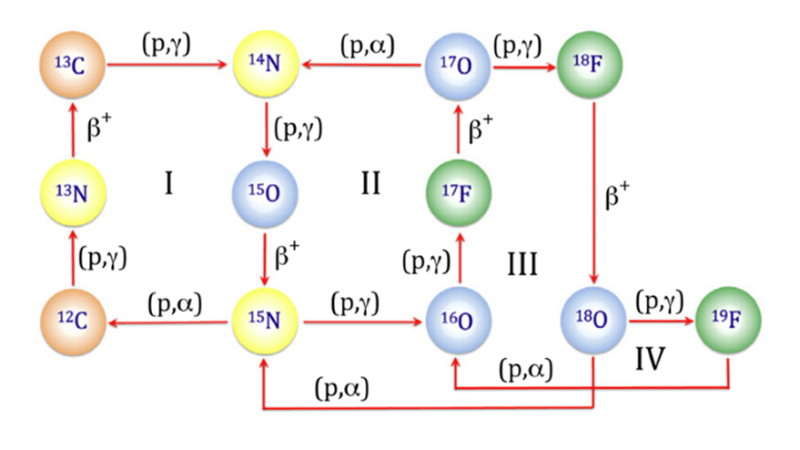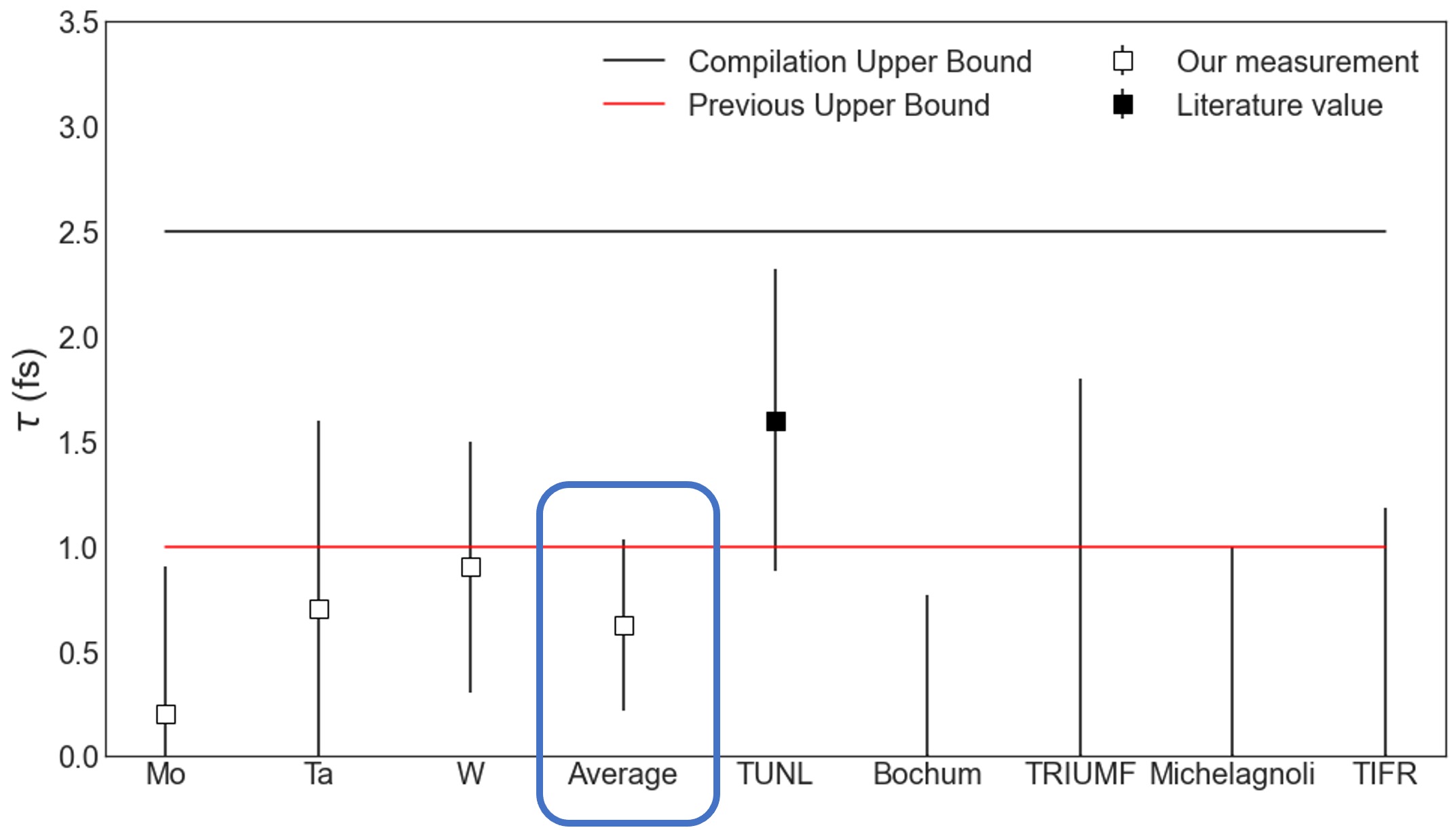Data
You will be redirected to cenamweb.org in 15 second(s). The JINA-CEE website is not updated anymore. The archived website can still be reached through the CeNAM website.
Lifetime Measurements of Excited States in 15O to Peek into the Solar Core

The carbon-nitrogen-oxygen (CNO) cycle (Fig. 1) is the main energy source in stars more massive than our sun and defines their energy production. The overall rate of the CNO cycle constrains the lifetimes of massive stars and is an important component for determining the age of globular clusters.
In our Sun, the CNO cycle accounts for roughly 1% of the total energy production. While this may not seem like much, studying these fine margins can provide important information about the Sun’s metal content (or metallicity). The neutrinos produced by the CNO cycle can be detected on Earth and provide a unique probe into the solar core. These neutrino fluxes depend not only on the isotopic abundances, but also on their associated, individual reaction rates, like those of 14N(p,γ)15O and 12C(p,γ)13N.

Recently, the BOREXINO collaboration succeeded in the first measurement of the solar CNO neutrino component, coming primarily from the beta-decay of 15O nuclei [1]. Due to its importance, extensive efforts have been undertaken to reliably determine the 14N(p,γ)15O reaction rate at the solar energy range. The uncertainty in the reaction rate arises predominantly from the uncertainty in the lifetime of the state at Ex = 6792 keV in 15O [2]. Previous measurements of this state’s lifetime are discrepant or only upper bounds, and some suffer from large systematic uncertainties. In order to address this, a new measurement of this state’s lifetime, as well as those from the excited states at Ex = 5181 keV and Ex = 6172 keV, has been performed using the Doppler Shift Attenuation Method (DSAM) at the Nuclear Science Lab at the University of Notre Dame. To increase the effect, the measurement was performed at higher energies than previous measurements to increase Doppler shift of the de-excitation gamma-rays.
The lifetimes were measured with three different targets each, and we report the weighted average. For the 6792 keV state, we obtained a τ = 0.6 ± 0.4 fs. This measurement agrees with the published upper bounds while providing a finite value and more stringent constraint on the lifetime (Fig. 2). To provide cross-validation of our method, we measured the lifetimes of the states at 5181 keV and 6172 keV to be τ = 7.5 ± 3.0 and τ = 0.7 ± 0.5 fs, respectively, in good agreement with previous measurements. These new lifetimes will be used alongside recent measurements of the 14N(p,γ)15O reaction capture cross-section in a full R-matrix fit to extrapolate the reaction’s behavior to solar energies. These results will provide a more complete understanding of this crucial reaction and an important, independent verification of the recent solar neutrino measurements.
References:
[1] The Borexino Collaboration., Agostini, M. et al., Nature 587, 577–582 (2020)
[2] Li et al., Phys. Rev. C 93, 055806 (2016)
